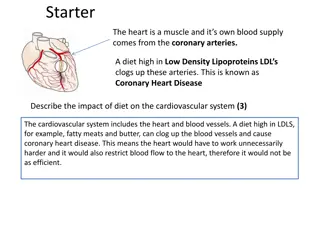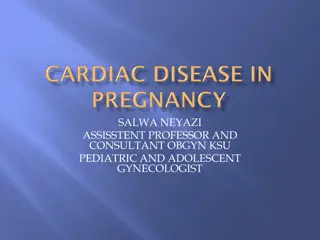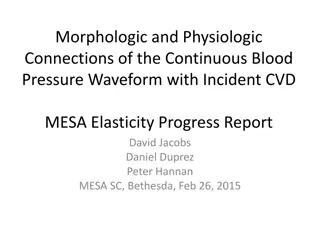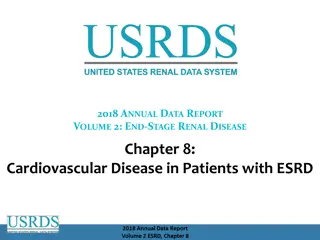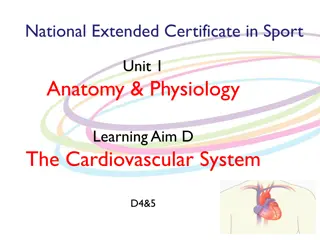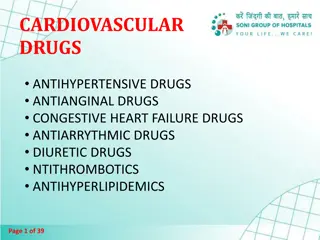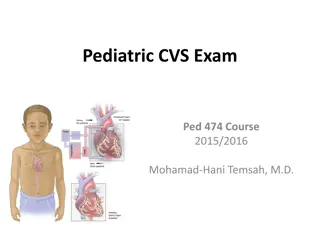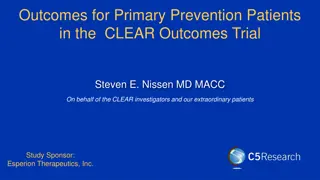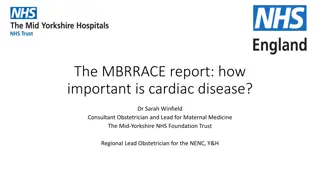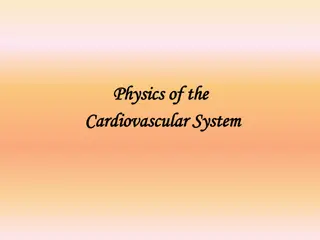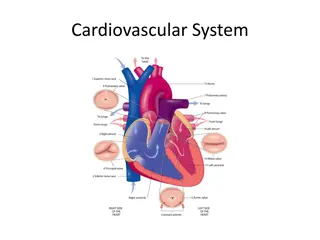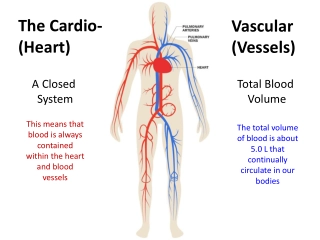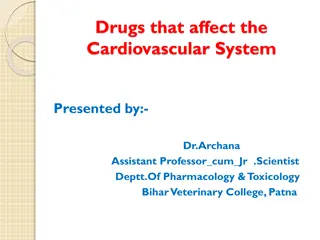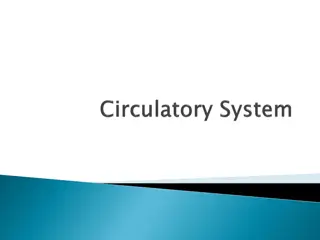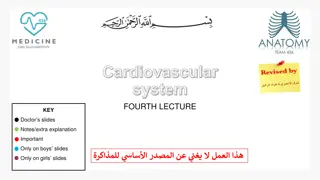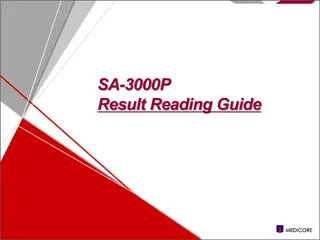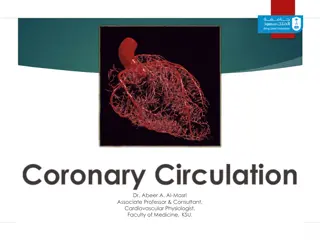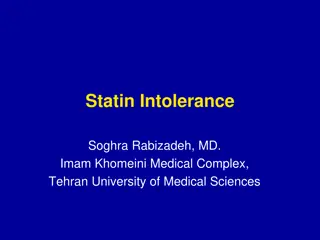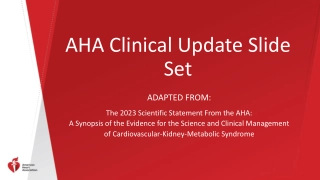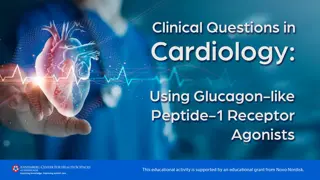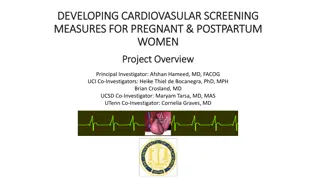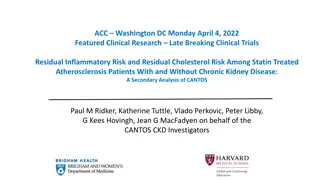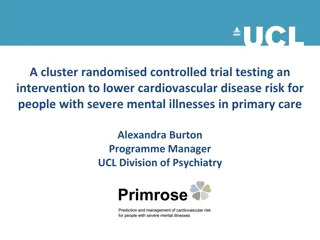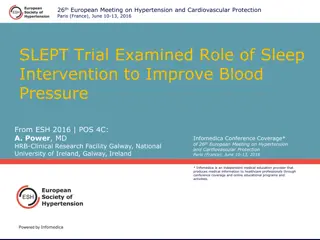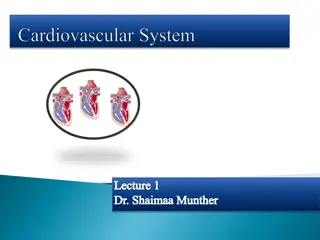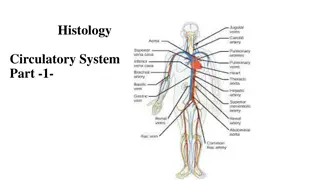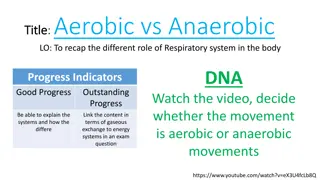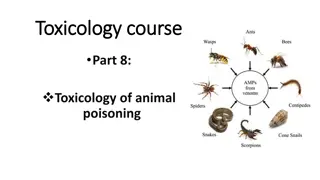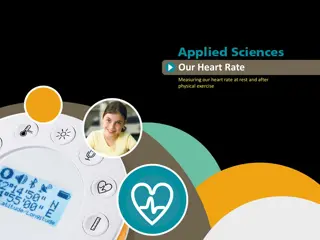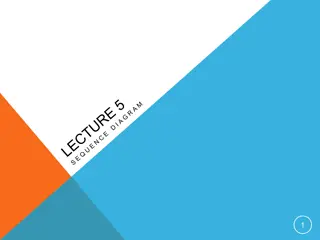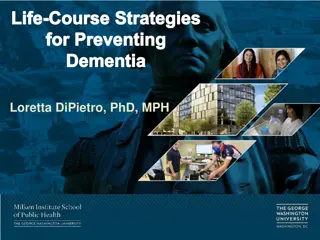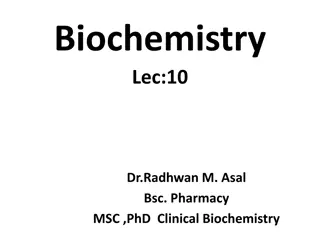Understanding the Cardiovascular System: An Overview
The cardiovascular system, comprised of the heart, blood vessels, and blood, plays a vital role in circulating nutrients, oxygen, and waste throughout the body. This summary provides insights into the structure and function of the heart's chambers, blood flow through the circulatory system, and the importance of arteries, veins, and capillaries in maintaining circulation.
Uploaded on Sep 13, 2024 | 0 Views
Download Presentation

Please find below an Image/Link to download the presentation.
The content on the website is provided AS IS for your information and personal use only. It may not be sold, licensed, or shared on other websites without obtaining consent from the author. Download presentation by click this link. If you encounter any issues during the download, it is possible that the publisher has removed the file from their server.
E N D
Presentation Transcript
Cardiovascular System Chapter 2.1
Circulatory System Carries blood throughout the body Includes: Heart Blood Veins Capillaries Arteries
The Heart Is an organ A Pump 4 chambers Made of mostly cardiac muscle ~ the size of your fist almost in the center of your chest.
Heart Chambers The Atriums are the upper chambers They send blood to the ventricles Left Atrium Right Atrium Right Ventricle Left Ventricle The Ventricles (work horse) are the lower chambers Send blood out of the heart
Right side of the Heart Oxygen-poor blood from the body comes into the right atrium Passes through the tricuspid valve to the right ventricle Passes to the pulmonary arteries and onto the lungs. What do you think the valves are for?
Left side of the Heart Oxygen-rich blood comes in from the lungs to the left atrium Passes to the left ventricle through the bicuspid valve Passes out to the body through the aorta.
Blood vessels Arteries Arterioles capillaries venules veins
Arteries A for Away Arteries take blood away from the heart. Thick elastic walls lined with smooth muscles. Heartbeat pumps blood at a high pressure Called Blood Pressure Stretch to withstand this pressure Called pulse
Ventricles and Arteries: Pumping Blood from your Heart Blood leaves the Heart through two ARTERIES. Artery Artery Right Ventricle Left Ventricle The Heart pumps blood through Arteries to the Lungs to collect Oxygen. The Heart pumps blood through Arteries to supply Oxygen to the Body.
Capillaries Exchange site between body and blood. Ex. nutrients, O2, CO2, and waste Very thin=cells travel through in single file.
Veins Return blood to the heart. Need valves to keep blood flowing in one direction.
Atriums and Veins: How Blood gets into your Heart Blood enters the Heart through two VEINS. Veins Left Atrium Right Atrium The Lungs send blood with Oxygen in it through veins to the Heart. The Body sends blood with no Oxygen in it through veins to the Heart.
Two types of Circulation Pulmonary Circulation Circulation between heart and lungs Systemic Circulation Circulation between heart and body
Cardiovascular Problems Atherosclerosis When cholesterol builds up in blood vessels High Blood Pressure (hypertension) Abnormally high blood pressure Stroke When a blood vessel in the brain becomes clogged or ruptures Heart Attack When heart muscles cells die Heart Failure When heart cannot pump enough blood to the body
Structure of Your Heart: Summary Blood from Veins into Heart From Lungs From Body Right Atrium Left Atrium Tricuspid Bicuspid Right Ventricle Left Ventricle To To Body Lungs Blood to Arteries out of Heart
Heart Structure ******Parts to ADD 16. Septum 17. Pulmonary Semilunar valve 18. Myocardium 1. Aorta 2. Superior Vena Cava 3. Pulmonary Artery 4. Pulmonary Vein 5. Right Atrium 6. Tricuspid 7. Right Ventricle 8. Inferior Vena Cava 9. Pulmonary Artery 10. Pulmonary Vein 11. Left Atrium 17. 12. Bicuspid 13. Aortic Semilunar Valve 14. Left Ventricle 16. 18. 15. Descending Aorta


